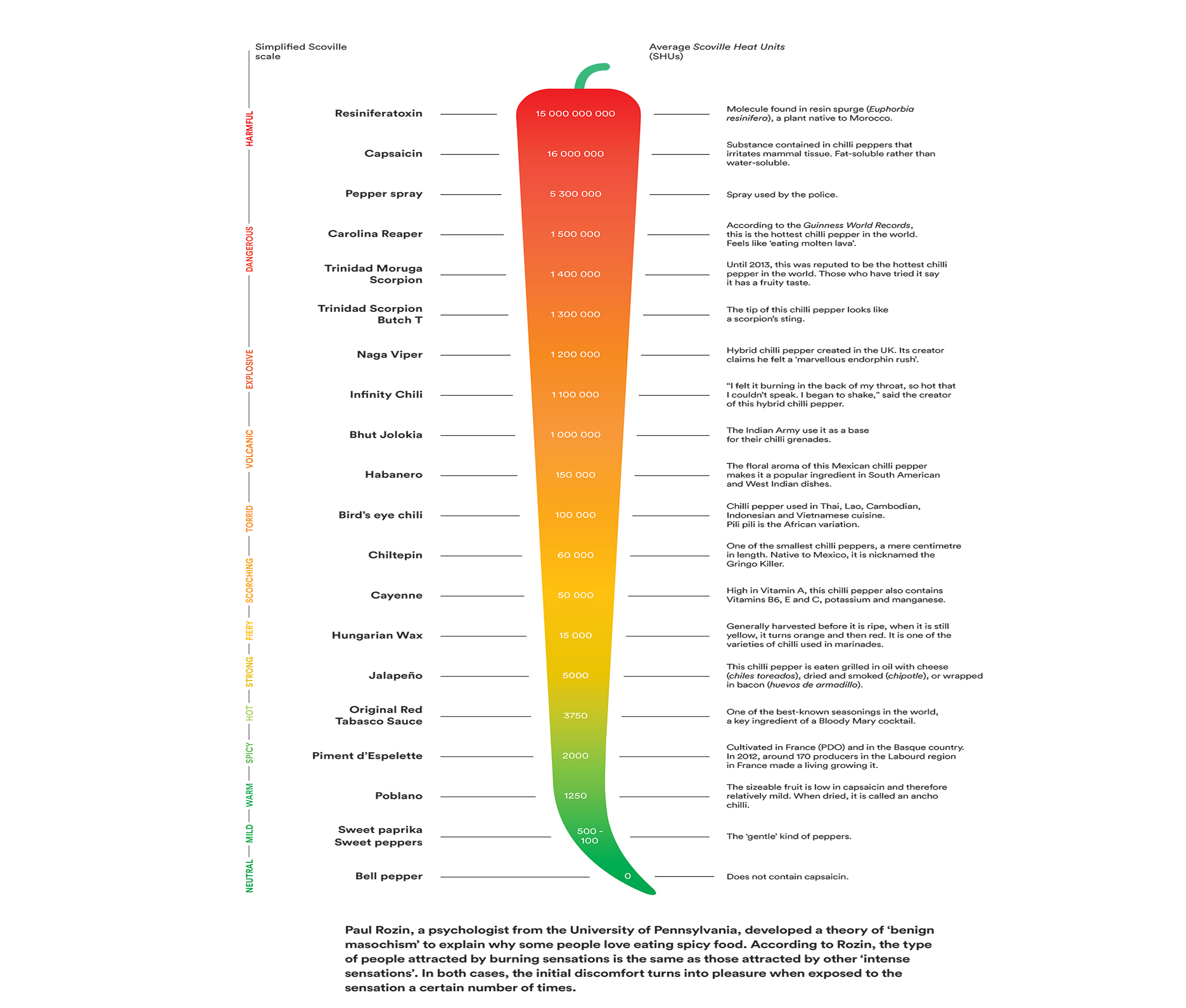The feeling that one’s mouth is on fire, known as pungency, can be of pure pleasure to some, but a complete nightmare to others. That is because peppers contain a chemical called “capsaicin” which activates its corresponding receptors in the mouth and on the tongue. The sensitivity and even the number of capsaicin receptors differ from one person to the other, which may explain why some people adore spicy foods while others cannot tolerate them. Studies have shown that psychology also plays a role; many spicy food enthusiasts declare that they do feel like they’ve swallowed the sun but take the pleasure from the pain and turn the experience into a good one! (McVean, 2017)
But even if you enjoy spicy foods, can you be too much of a daredevil?
Chilies are placed on a scale called the Scoville scale, and that is based on their spiciness. The rating goes from ZERO Scoville units for bell peppers all the way to FIFTEEN MILLION Scoville units for pure capsaicin!
Fun fact: We hear a lot about pepper spray, but did you know that it also falls on the Scoville scale? It is rated between two million and 5.3 million Scoville units. The lower bound refers to the kind of pepper spray a person might be able to purchase for self-defense purposes. The upper bound is the kind that the U.S. Police can use.
Professor Paul Bosland at New Mexico State University states that unusually hot chili peppers can actually kill a person. When someone eats a very hot pepper, the first sensation they experience is typically mouth numbness because the receptors are sending a message to the brain that there is pain in the form of heat. The brain hence sends pain-relieving molecules called endorphins to stop that pain.
However, with unusually hot peppers, the response goes beyond numbness of the mouth: the body will blow up liquid-filled “balloons” (called “blisters”) in all areas exposed to the high concentration of capsaicin in order for them to absorb the heat and not allow it to reach further areas in the body. Some chilies are so hot that those blisters are not enough to absorb the heat, which can lead to an excruciating burning sensation that lasts at least 20 minutes. And because of that, in some cases, consumers vomit up the pepper which can sometimes happen so violently that urgent hospital administration is needed.
Furthermore, if the capsaicin concentration is too high, the body’s immune system can go into overdrive. Extremely hot peppers can lead to severe burns and even the closing of a person’s airways – which, if left untreated, can be fatal.
On a less dramatic note, spicy foods have a positive effect on metabolism, hence may aid in weight loss. They can also keep the heart healthy!
However, many people believe spicy foods cause ulcers; they don’t, nor do they induce other complications as many might think. There are actually underlying causes for such complications, such as taking anti-inflammatory drugs around the clock or Irritable Bowel Syndrome. So, of course, eating spicy foods can aid those other underlying conditions in causing the complications.
In conclusion, that spicy food you decide to eat will not be the last thing you consume (that is, needless to say, if you do not consume any one of the world’s most dangerous peppers). Learn more about what you are eating, and avoid foods accordingly. Other than that, enjoy your wings!
